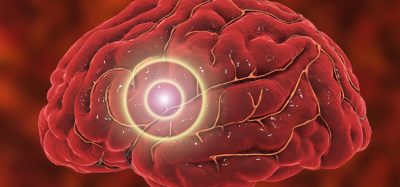“Untreatable” cases of cystic fibrosis may be undermined by new therapy
Posted: 28 July 2021 | Anna Begley (Drug Target Review) | No comments yet
An experimental drug suggests that therapy for currently untreatable cases of cystic fibrosis is “clearly achievable”.

An experimental drug has shown that a path to treat currently untreatable cases of cystic fibrosis caused by nonsense mutations is achievable, according to a study by researchers led by David Bedwell and Steven Rowe at the University of Alabama at Birmingham, US. The drug may also help patients with other genetic diseases such as Duchenne muscular dystrophy (DMD), β-thalassemia and numerous types of cancers that are also caused by nonsense mutations.
With cystic fibrosis, mutations affect the protein CFTR, the malfunctioning of which creates a mucus that allows infections in the lungs. A gene mutation that changes one of the nucleotide bases on RNA may cause an incorrect amino acid to be placed in the protein chain, altering its function. The nonsense premature termination codons that the team studied cause a different problem: the mutation forces the ribosome to stop protein synthesis mid-course, yielding an incomplete protein and causing nonsense-mediated mRNA decay.
The team therefore searched for small molecule compounds that would make the ribosome skip through the nonsense premature stop mutation, permitting the ribosome to continue full synthesis of the protein. They used rat cells that carried a modified gene from a deep-sea shrimp to test hundreds of thousands of compounds. The gene encoded NanoLuc luciferase but with a modification to place a premature termination codon in mid-gene. A small molecule that causes the ribosome to readthrough the premature stop would produce intact luciferase, making the cells grow.
This reporter gene allowed a team at Southern Research to test 771,345 compounds using high-throughput screening. Of the 180 compounds that showed readthrough activity, the small molecule SRI-37240 was the most active. Furthermore, the researchers found that SRI37240 restored the function of human CFTR genes with premature termination codon mutations, as tested in rat cell cultures, and increased the amount of RNA. The researchers then synthesised 40 derivatives of SRI-37240 and one, SRI-41315 showed better physiochemical features. In human cell lines with the NanoLuc reporter gene, it showed greater readthrough efficiency and acted synergistically with G418.
To predict the clinical efficacy for cystic fibrosis, the researchers tested primary human bronchial epithelial cells that had endogenous CFTR premature codons. Neither SRI-37240 or SRI-41315 alone increased CFTR function, but SRI-41315 with G418 showed a significant increase in function.
Unfortunately, the two compounds had a deleterious effect on ion conductance mediated by the epithelial sodium channel. The readthrough effect of aminoglycosides is also limited as these antibiotics do not restore therapeutic levels of CFTR. They must also be given intravenously and can be toxic.
However, Bedwell and Rowe said that it is increasingly likely that multiple distinct agents with different mechanisms of action could impart a clinically impactful response. “While further medicinal chemistry is needed to identify readthrough compounds that maximally impact CFTR function without undesirable off-target effects, the results presented here suggest this path is clearly achievable,” they concluded.
The study is published in Nature Communications.
Related topics
Antibiotics, Disease Research, Drug Leads, High-Throughput Screening (HTS), Hit-to-Lead, In Vivo, Ion Channels, Molecular Targets, RNAs, Screening, Small Molecules, Therapeutics
Related conditions
Cystic fibrosis
Related organisations
The University of Alabama at Birmingham
Related people
David Bedwell, Steven Rowe







